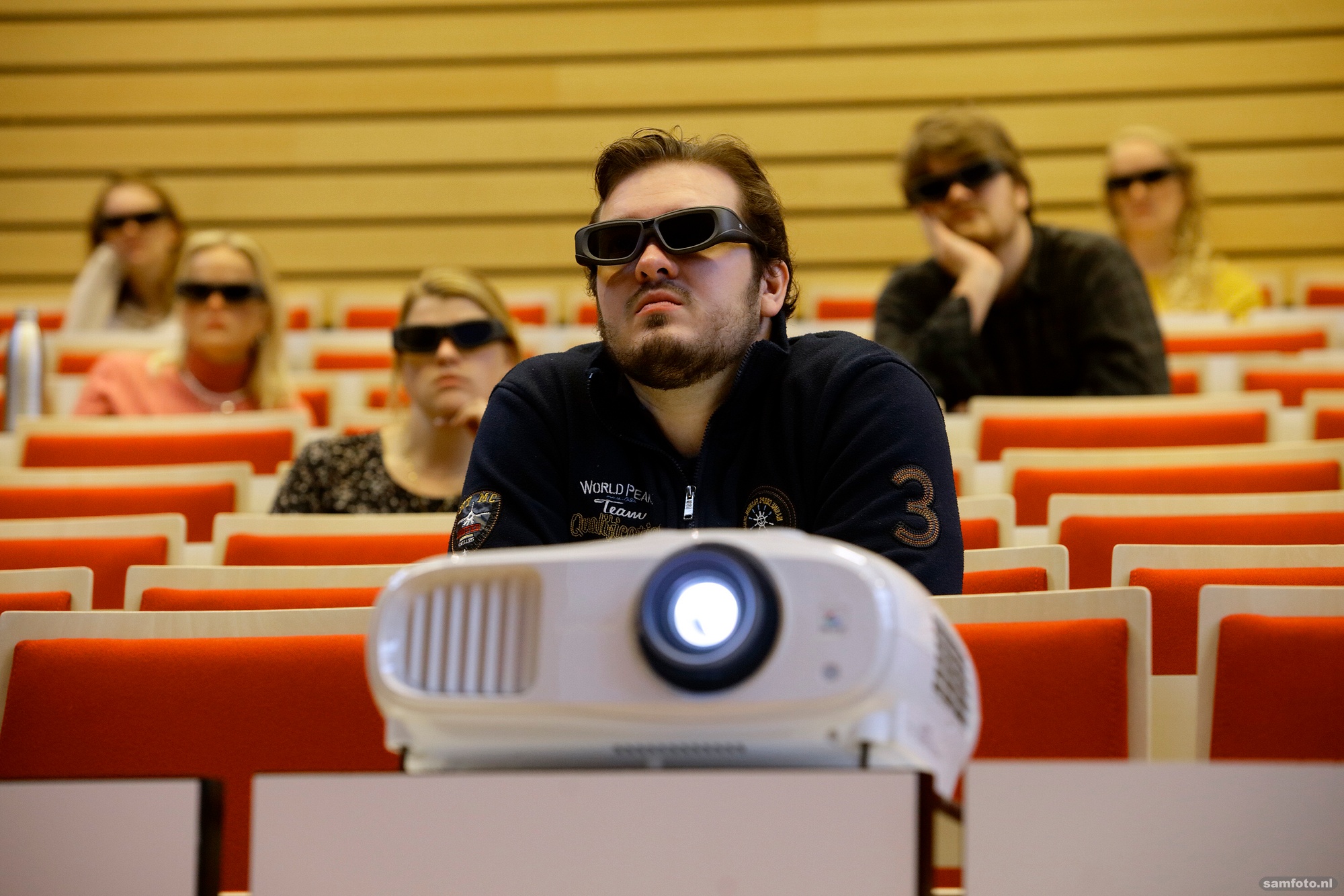Last Friday, Delft master’s students in biomedical technology were able to watch live from a lecture hall to an ear operation in a Berlin university hospital.
3D-glasses add depth to the live-event. (Photo: Sam Rentmeester)
It was a one-off event that made you want more. As part of the Telestar European research project, the Berlin University Hospital Charité connected to a Delft lecture hall last Friday. First-year biomedical technology programme master students (34 out of 80) watched images from Munich Surgical Imaging’s stereomicroscope. The Telestar project aims to use images from the operating room for remote consultation and training.
Technically, the connection was excellent, lecturer John van den Dobbelsteen later explained. He himself was impressed by the depth of the 3D images and by the ease with which certain parts could be marked as a form of augmented reality.
The students reacted positively, says Van den Dobbelsteen. He knows that students like to watch operations, and this was no exception. What made this form of watching so special was not so much the technology but watching the operation live. They heard the professor explain his actions and his points of consideration. Next time, Van den Dobbelsteen would also like to have an audio connection so that students can ask questions and further increase their involvement.
As part of his teaching, Van den Dobbelsteen brings students into contact with surgical practice in various ways. For example, he interviews surgeons and shows recordings of operations during lectures. But that doesn’t compare with a live connection like Friday. What’s more, he has the impression that explaining things during an operation is a form of teaching that is very well suited to medics given their guild-like tradition. So Van den Dobbelsteen tries to organise live viewing sessions in cooperation with nearby hospitals. “Technically we can do it. An encoder, a beamer and some glasses – that’s all you need.”
Do you have a question or comment about this article?
j.w.wassink@tudelft.nl


Comments are closed.